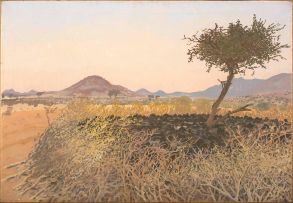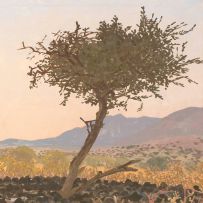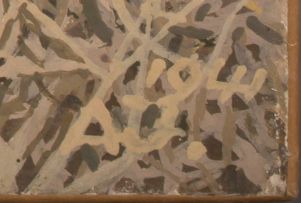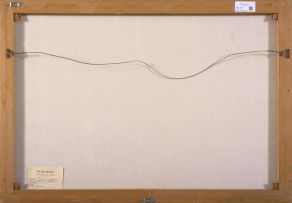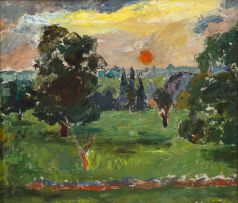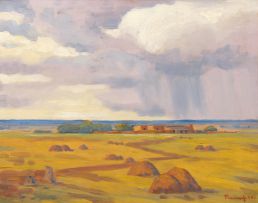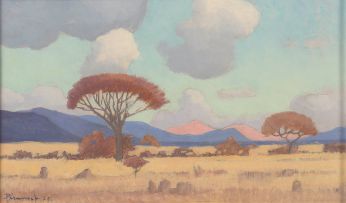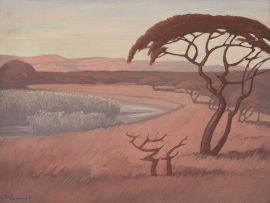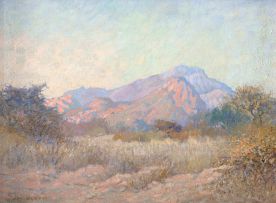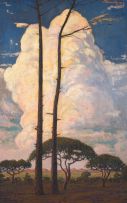Modern, Post-War and Contemporary Art, Decorative Arts, Jewellery and Fine Wine
Live Virtual Auction, 8 - 11 November 2020
Modern, Post-War and Contemporary Art Part II
Incl. Buyer's Premium & VAT
About this Item
signed with the artist's initials and dated 1941; inscribed with the artist's name and title on a Die Kunskamer label adhered to the reverse
Notes
Painted three years after his arrival in South West Africa from Germany in 1938, Schafpferch am Abend (Sheep Pen in the Evening) is a rare work in the oeuvre of Adolph Jentsch because of its inclusion of animals, namely Karakul sheep, seen here nestling at dusk in a man-made kraal constructed from the branches of thorn trees. As Nico Roos suggests, Jentsch's paintings of Karakul sheep are important because 'in both content and approach these works differ from anything done until this time in South West African art. In reality these are portrayals of the farming industry, an important aspect of human activity and even now largely neglected by artists'.1
The inclusion of the animal in the landscape further emphasises the feeling of total freedom of nature in which the presence of man often remains peripheral, in contrast to the largely man-made landscape as he had known it in Germany. Roos continues: 'Although man does not appear in these pieces, his presence is always sensed and his handiwork is apparent in kraals of thorn tree boughs … These are mainly mood pieces in which Jentsch gives the landscape an important place. Sometimes we see the sheep huddled together in kraals of thorny boughs commonly used in South West Africa … which served to protect the livestock from the predatory beasts of the veld'.2
Inspired and vivacious, works such as Schafpferch am Abend elevate Jentsch's early observations of the Karakul beyond mere scientific animal studies to include them as a constituent part of the arid landscape in which they thrive. However, his portrayal of animals was limited to the first few years after his arrival in South West Africa, not appearing in his art after 1943 and setting this work apart from his later paintings in which the unique light of the South West African landscape would become the sole subject of Jentsch's artistic focus and vision.
1. Nico Roos (1978) Art in South-West Africa, Pretoria: JP van der Walt, page 130.
2. Ibid, page 134.
Literature
Nico Roos (1978) Art in South-West Africa, Pretoria: JP van der Walt, illustrated in black and white on page 131.

